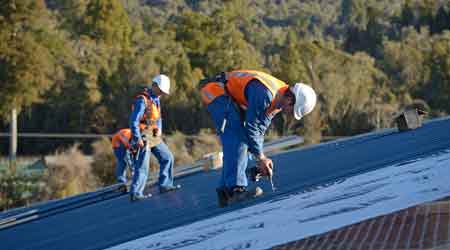Role of Inspections, Repairs in Roof Asset Management
Last of a 3-part article describing three critical issues in getting the most out of a roof, including design, maintenance, and repairs
2. Inspections, Twice a Year
After the roof has been accepted, facility managers should establish a schedule of regular inspections. Most are required by the roof warranty. Many roof warranties are voided because they are not performed.
In most applications, a visual inspection should be performed twice each year, once in the fall and once in the spring. Those inspections are timed to identify any defects that may have been caused while the roof was exposed to the extremes of summer and winter weather. The inspections must include all of the roof components: the membrane, flashings, penetrations, drains, and equipment installations. The goal of the visual inspection is to identify all defects while they are still small and can be easily corrected.
The twice-yearly inspections should be considered the minimum requirement. Additional inspections should be performed following certain weather events, such as heavy rains, windstorms, or heavy snow and ice storms. If the mechanical and electrical equipment installed on the roof is replaced, altered, or undergoes a significant maintenance overhaul, the roof should be visually inspected once the work has been completed. Roof membranes can be punctured or torn by inadvertently dropped tools or equipment panels.
In addition to the visual roof inspection, roof moisture surveys should be conducted every three of four years. In most cases, this will involve the use of an outside contractor to perform the testing and interpret the results. Each new survey should be compared with the past surveys to determine what changes have taken place since previous surveys.
For most visual inspections, managers can expect to spend 2 to 5 cents per square foot per inspection. Moisture surveys, which require the use of specialized equipment, typically cost 10 to 15 cents per square foot. Inspections cost money, but money spent identifying developing issues before they grow too large will reduce repair costs while extending the life of the roof.
3. Prompt Repairs
Surveying the roof is not sufficient by itself. The results of the survey must be acted on, and quickly. The roof, particularly one that has a number of developing defects, is not a static component. Defects will grow. Water will migrate. Hidden damage will occur. Therefore it is essential that managers treat survey information as being dated. If it is not acted on promptly, it will become obsolete.
Managers must be prepared to make the required repairs once the surveys have been completed. In-house personnel can perform some of the repair activities, such as cleaning out roof drains and removing debris. If the facility’s staff has the proper experience and training, they can perform at least some of the additional repairs.
Beyond these, it will be necessary to bring in an experienced roofing contractor to complete the repairs. Contracts will have to be set up ahead of time to ensure that the roof contractor is qualified to work on that particular type of roof and will respond within the time frame expected.
If managers are to minimize the life-cycle costs of their roofing systems, they must commit to this roofing maintenance program. Spending a little more initially to verify that they receive a quality roof inspection, and following this up with annual expenses to inspect and repair the roof is the only way a roof can be expected to achieve its rated service life. Studies have shown that those roofs that are ignored until leaks develop only last on average of 13 to 14 years. Where a proactive maintenance program is implemented, the same type of roof has an average service life of 21 years or more — an increase of 50 percent or more. And this does not even take into account the reduced costs of planned repairs versus emergency repairs. There too, managers can expect to save 25 to 50 percent on maintenance costs over the life of the roof.
James Piper, P.E., is a national consultant based in Bowie, Md., with more than 25 years of experience with facilities management and maintenance issues.
Related Topics:














